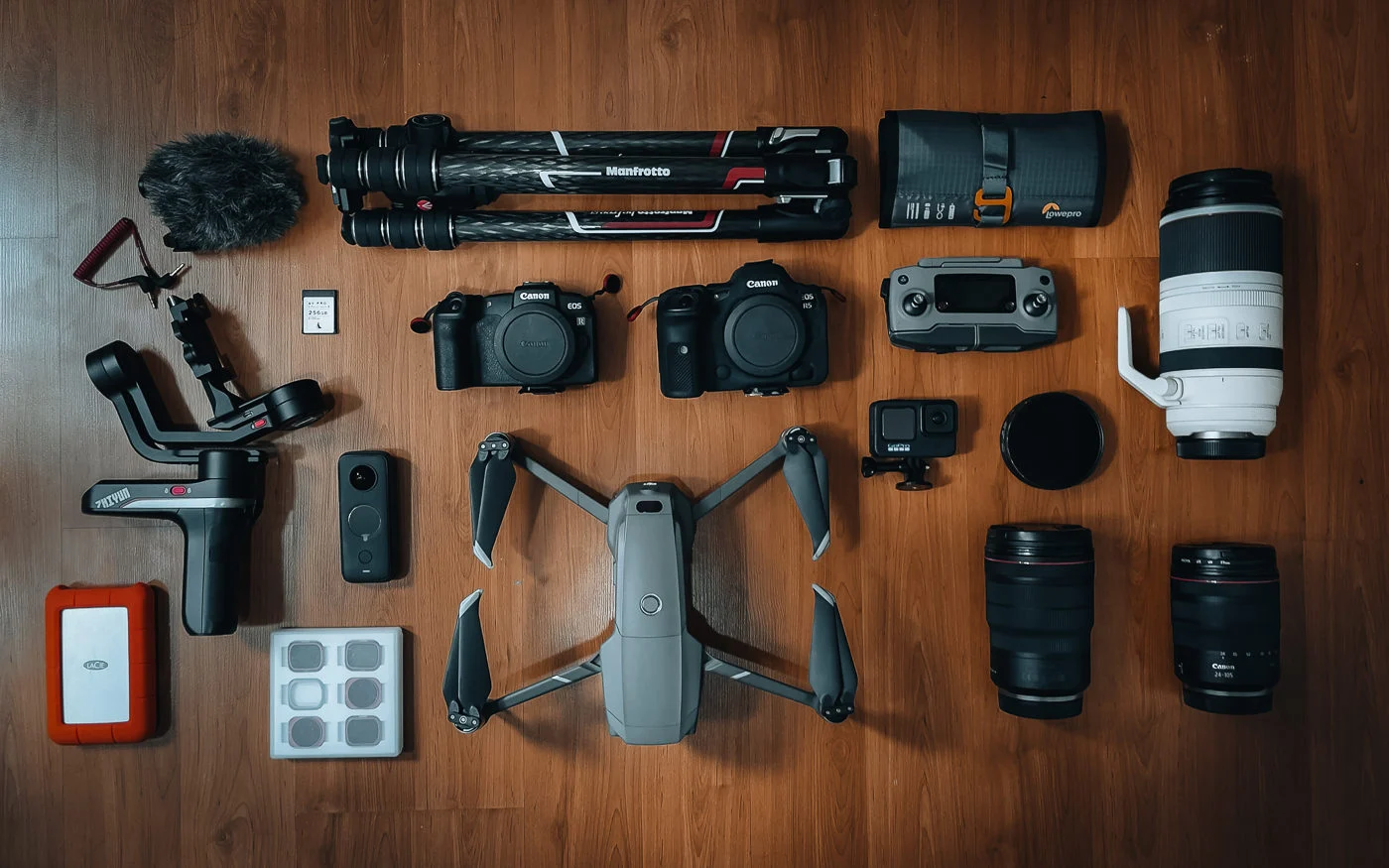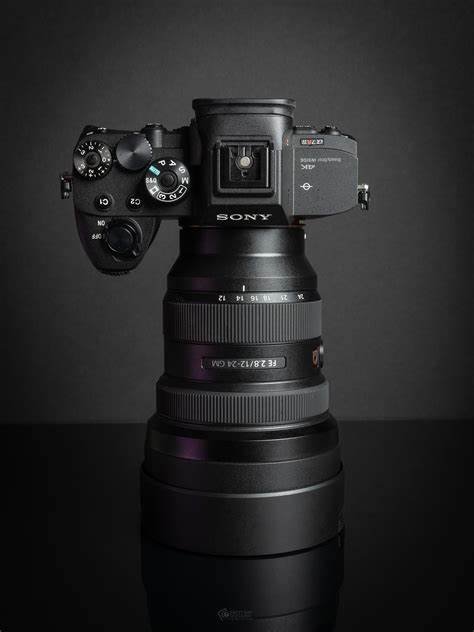Starting out in photography can be both exciting and overwhelming. With countless gear options available, knowing what to invest in can make a significant difference in your learning experience. Here’s a comprehensive guide to the essential photography gear you need as a beginner, helping you capture stunning images and develop your skills.
1. Camera
Choosing the Right Camera:
- DSLR Cameras: Digital Single-Lens Reflex (DSLR) cameras are popular among beginners for their versatility and image quality. They offer interchangeable lenses and manual settings, which are great for learning photography fundamentals.
- Mirrorless Cameras: These cameras are compact and lightweight while offering similar functionality to DSLRs. They’re a good option if you prefer a more portable solution without sacrificing performance.
Recommended Models:
- DSLR: Canon EOS Rebel T7 / EOS 2000D, Nikon D3500
- Mirrorless: Sony Alpha a6000, Canon EOS M50
Tip: Choose a camera with a good balance between features and ease of use. A camera with an intuitive interface will help you learn faster.

2. Lenses
Types of Lenses:
- Kit Lens: Most beginner cameras come with a standard kit lens, usually an 18-55mm zoom lens. It’s a versatile choice for general photography and a great starting point.
- Prime Lens: A fixed focal length lens, like a 50mm f/1.8, is ideal for portraits and low-light situations due to its wide aperture and sharpness.
- Wide-Angle Lens: A 10-18mm lens is great for landscapes and architectural photography, providing a broader field of view.
Tip: Start with a versatile kit lens and consider adding a prime lens for better low-light performance and sharper images.
3. Tripod
Why a Tripod is Essential:
- Stability: A tripod stabilizes your camera, reducing camera shake and allowing for longer exposures, essential for low-light and night photography.
- Versatility: It helps with compositions, long exposures, and shooting in challenging conditions.
Recommended Models:
- Beginner Tripod: Manfrotto Compact Action, AmazonBasics 60-Inch Lightweight Tripod
Tip: Choose a tripod that is sturdy yet lightweight for ease of transport. Make sure it can support the weight of your camera and lens.
4. Camera Bag
Choosing the Right Camera Bag:
- Protection: A camera bag protects your gear from damage and provides easy access when you’re on the move.
- Organization: Look for bags with padded compartments to keep your camera and lenses organized and safe.
Recommended Models:
- Messenger Bag: Lowepro Slingshot Edge 250 AW
- Backpack: Peak Design Everyday Backpack
Tip: Choose a camera bag that fits your gear and personal style. Comfort and accessibility are key features to look for.
5. Memory Cards
Selecting the Best Memory Cards:
- Capacity: A 32GB or 64GB card is usually sufficient for most beginner photographers, providing ample space for thousands of photos.
- Speed: Look for cards with a high write speed to ensure quick data transfer and avoid delays when shooting.
Recommended Models:
- SanDisk Extreme Pro SDHC UHS-I
- Lexar Professional 64GB SDXC UHS-I
Tip: Always carry multiple memory cards to ensure you have enough storage for extended shoots.
6. Extra Batteries
Why Extra Batteries are Important:
- Extended Shooting Time: Having extra batteries ensures you won’t run out of power during important moments.
- Backup: It’s always good to have a backup in case your primary battery dies unexpectedly.
Recommended Models:
- Canon LP-E17 (for Canon cameras)
- Nikon EN-EL14a (for Nikon cameras)
Tip: Invest in high-quality, brand-compatible batteries to ensure reliability and longevity.
7. Cleaning Kit
Keeping Your Gear Clean:
- Lens Cleaning: A lens cleaning kit helps keep your lens free from dust and smudges, ensuring sharp and clear images.
- Sensor Cleaning: Use a sensor cleaning kit or have your sensor cleaned professionally to avoid dust spots on your photos.
Recommended Kits:
- Lens Cleaning Kit: Altura Photo Professional Cleaning Kit
- Sensor Cleaning Kit: VisibleDust Arctic Butterfly
Tip: Regularly clean your gear to maintain optimal performance and image quality.
8. Remote Shutter Release
Why Use a Remote Shutter Release:
- Prevent Camera Shake: A remote shutter release allows you to take photos without touching the camera, minimizing camera shake and improving image sharpness.
- Long Exposures: It’s useful for capturing long exposures or self-portraits.
Recommended Models:
- Canon RC-6 Wireless Remote
- Nikon ML-L3 Wireless Remote
Tip: A remote shutter release can also be controlled via smartphone apps for added convenience.
9. Lens Filters
Types of Lens Filters:
- UV Filters: Protect your lens from dust, scratches, and UV light, though they are less essential with modern digital sensors.
- Polarizing Filters: Reduce reflections and enhance colors, making them great for outdoor photography and landscapes.
Recommended Models:
- UV Filter: Hoya UV (C) Filter
- Polarizing Filter: B+W Circular Polarizer
Tip: Select filters based on the types of photography you enjoy most and ensure they are compatible with your lens size.
10. Photography Software
Editing Software:
- Adobe Lightroom: Offers powerful tools for photo editing and organization, ideal for beginners looking to enhance their images.
- Adobe Photoshop: Provides advanced editing features for more complex adjustments and retouching.
Tip: Familiarize yourself with basic editing techniques to improve your photos and bring your creative vision to life.
Conclusion
Having the right gear can make a significant difference as you embark on your photography journey. By investing in essential equipment like a good camera, versatile lenses, and supportive accessories, you’ll be well-equipped to capture stunning images and explore the art of photography. Start with these basics, and as your skills and interests evolve, you can expand your gear collection to suit your needs.
Happy shooting!











